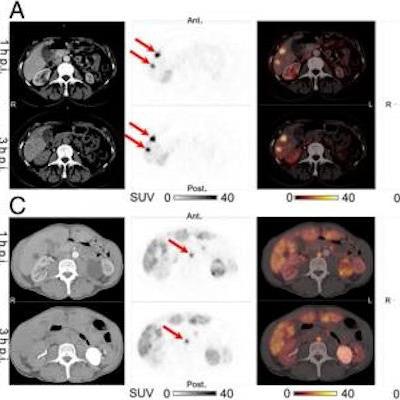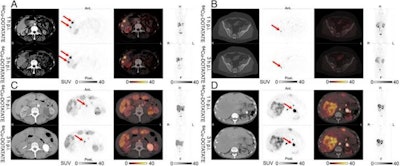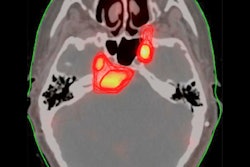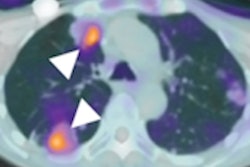
For patients with neuroendocrine neoplasms, the imaging time window of copper-64 (Cu-64) DOTATATE PET/CT can be extended from one hour to three hours after injection, according to new research (Journal of Nuclear Medicine, January 1, 2021, Vol. 62:1, pp. 73-80).
When comparing the scans of both time intervals, the research team led by Dr. Mathias Loft from the University of Copenhagen in Denmark found no significant differences in the number of lesions detected. Similarly, tumor-to-normal tissue ratios remained high in all key organs.
Previous research already determined that Cu-64 DOTATATE PET provides excellent lesion detection in patients with neuroendocrine neoplasms. But given the long half-life of the imaging agent, could the time window be expanded? That's precisely what the researchers sought to determine.
In their prospective study of 35 patients, each participant received Cu-64 DOTATATE whole-body PET imaging at both the one-hour and three-hour mark after injection. The researchers counted the number of lesions on the scans and grouped them according to organs or regions. They also noted uptake of the imaging agent in lesions and normal tissues along with calculating tumor-to-normal-tissue ratios.


Representative examples of lesions in the same patients scanned at one hour postinjection and three hours postinjection. From left to right: CT, Cu-64 DOTATATE PET, fused Cu-64 DOTATATE PET/CT and maximum intensity projection (MIP) with corresponding standardized uptake value (SUV) color bars below. For each example, the one-hour-postinjection Cu-64 DOTATATE PET/CT is on top and the three-hour-postinjection Cu-64 DOTATATE PET/CT is on the bottom. (A) Liver lesions, (B) bone lesion, (C) lymph node lesion, (D) pancreatic lesion. All lesions were identified on both the one-hour postinjection and three-hour postinjection Cu-64 DOTATATE PET. Ant = anterior, Post = posterior, R = right, L = left, H = head, F = feet. Image courtesy of M. Loft et al, ENETS Neuroendocrine Tumor Center of Excellence, Rigshospitalet, Copenhagen, Denmark.
Loft and colleagues found a total of 882 concordant lesions. They also discovered five discordant lesions, meaning they were found on one of the PET scans but not the other. However, only four were considered true lesions after further imaging.
Due to the high agreement of lesions at both time periods, the evidence supports extending the PET tracer imaging window to three hours, the researchers concluded.




















